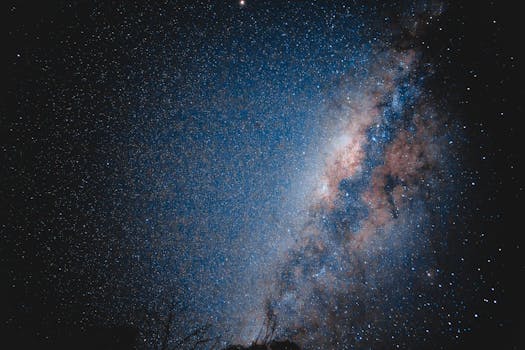
“
Beyond the Milky Way: Imagining New Worlds and Possibilities – Exploring the Vast Expanse of Space
Beyond the Milky Way: Imagining New Worlds and Possibilities is an exciting topic that has captured the imagination of scientists, philosophers, and science fiction writers for centuries. As we continue to explore our own galaxy, we are also looking beyond its borders to see what other wonders the universe holds. In this article, we will delve into the possibilities of what lies beyond the Milky Way and explore the implications of such discoveries.
Introduction to the Milky Way
The Milky Way is a barred spiral galaxy that is estimated to contain between 200 and 400 billion stars. It is just one of the billions of galaxies that make up the observable universe. Our galaxy is thought to have formed around 13.6 billion years ago, during the early days of the universe, and has been evolving ever since. The Milky Way is home to a diverse range of celestial objects, including stars, planets, asteroids, comets, and black holes.
Exploring Beyond the Milky Way
As we look beyond the Milky Way, we are met with a vast expanse of intergalactic space. The nearest galaxy to our own is Andromeda, which is approaching us at a speed of around 250,000 miles per hour. Andromeda is a spiral galaxy, similar to the Milky Way, but larger, with hundreds of billions of stars. The distance between the Milky Way and Andromeda is around 2.5 million light-years, which means that it takes light from Andromeda around 2.5 million years to reach us. For more on this topic, check out our article on Charting New Realms: The Journey of Imagination Beyond the Stars.
Imagining New Worlds and Possibilities
As we explore beyond the Milky Way, we are faced with the possibility of discovering new worlds and civilizations. The idea of extraterrestrial life has long fascinated humans, and the discovery of exoplanets has given us hope that we may one day find life beyond our galaxy. The search for extraterrestrial life is an active area of research, with scientists using a range of techniques to search for signs of life, such as the presence of oxygen or methane in the atmospheres of distant planets. This exploration ties closely with the themes discussed in Galaxies of Dreams: How Imagination Transcends the Night Sky.
The Implications of Discovering New Worlds and Civilizations
The discovery of new worlds and civilizations beyond the Milky Way would have profound implications for our understanding of the universe and our place within it. It would challenge our current understanding of the universe and raise new questions about the potential for life and the origins of the universe. The discovery of extraterrestrial life would also raise questions about the potential for communication and cooperation with other civilizations. For further insights, explore The Infinite Universe of Imagination: Beyond Celestial Boundaries.
Takeaways
In conclusion, the possibility of discovering new worlds and civilizations beyond the Milky Way is an exciting and intriguing one. As we continue to explore our own galaxy and look beyond its borders, we are faced with the possibility of discovering new and exciting things about the universe and our place within it. The implications of such discoveries would be profound, and would challenge our current understanding of the universe and our place within it.





